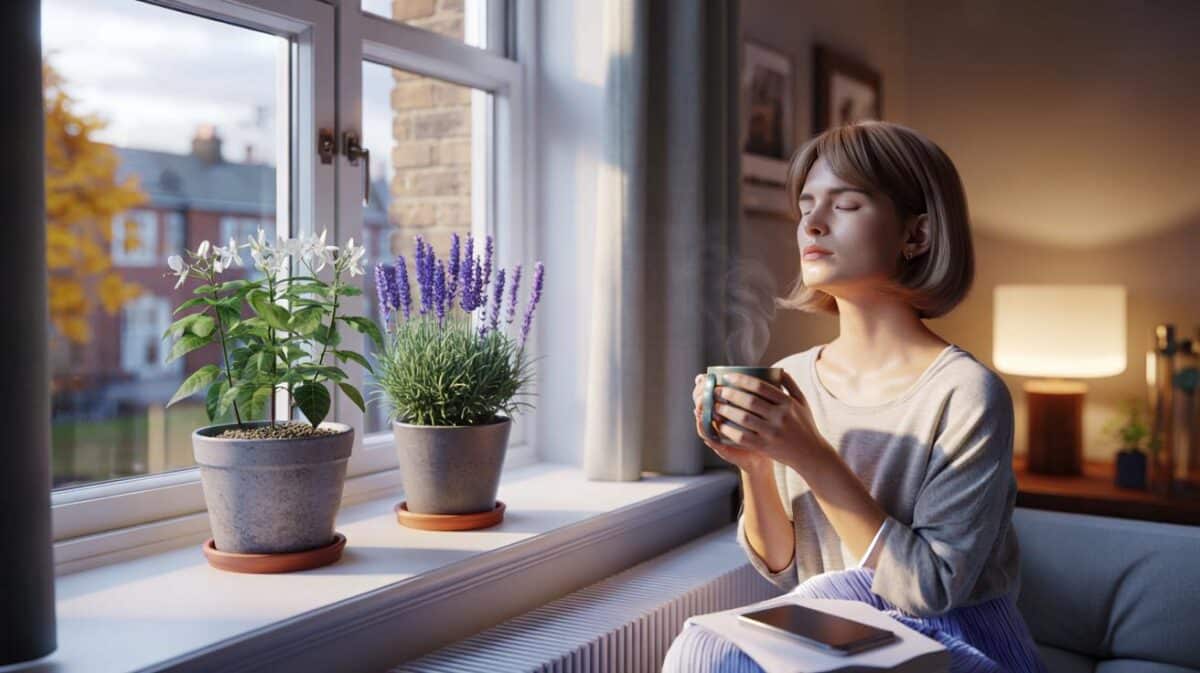Yet tired beds can still blaze with seasonal colour.
Across the country, hosepipe bans and cracked turf are changing how people garden. A few strategic choices now can turn a thirsty plot into a resilient, colourful space from October onwards, with less fuss and far less water.
Why autumn gardens fade when rain holds off
Warm days and wind keep drawing moisture from the soil after summer. Roots work harder, but many plants stop flowering and shed leaves. Thin lawns expose bare soil that bakes hard and sheds any brief shower.
Late frosts earlier in the year can weaken growth, which then struggles through autumn drought. Weeds exploit gaps and compete for scarce moisture. Pollinators visit less often when flowers vanish.
Dry autumns punish shallow roots. Plants with deep or fibrous systems ride out the gap between showers.
Simple changes that save every drop
- Lay 5–7 cm of organic mulch on bare soil to cut evaporation and suppress weeds.
- Water rarely but deeply at dusk, focusing on the root zone, not the leaves.
- Raise the mower to 6–8 cm so the grass shades its own roots.
- Swap thirsty lawn edges for drought-tolerant perennials and gravel pockets.
- Group plants with similar water needs to avoid waste.
The trio that shrugs off drought and paints the season
Three reliable species stand out for lean-water conditions. Each brings structure, nectar and colour when the rest of the garden runs out of steam.
| Plant (Latin name) | Height and spread | Main season of interest | Water once established | Best position |
|---|---|---|---|---|
| Yarrow (Achillea millefolium) | 40–70 cm × 40–60 cm | Summer to early autumn colour | Minimal; in heatwaves only | Full sun, free-draining soil |
| Black elder (Sambucus nigra) | 3–6 m × 3–6 m | Spring flowers, autumn berries and form | Low; deep roots seek moisture | Sun to light shade, most soils |
| Corn poppy (Papaver rhoeas) | 40–80 cm × 20–30 cm | Late spring to early summer blooms; pods add autumn texture | None; thrives on neglect | Full sun, poor soil |
Yarrow: colour, structure and almost no fuss
What you gain when the weather runs dry
Flat flower heads sit over ferny foliage and hold their colour into October in warm districts. Whites, golds, soft pinks and russets play well with grasses. Stems stay upright in wind, so borders keep their shape.
Dense, fibrous roots anchor loose or stony ground. Pollinators use the wide landing pads even on breezy days. Low, repeating clumps lead the eye along a path or across a slope.
How to plant and maintain
Sow or plant in spring or early autumn. Space 35–45 cm apart on a free-draining bed. Add grit to heavy soil to stop winter wet. Water weekly for the first month, then taper off.
Cut spent stems to prompt a second flush. Divide every three years to refresh clumps and fill new gaps. Avoid rich feeds, which make weak, floppy growth.
Once settled, yarrow often needs no irrigation at all, even after three rainless weeks.
Black elder: berries, shade and backbone in one plant
Fast impact with limited watering
Black elder grows quickly, forming an elegant screen where a hedge fails in drought. Creamy spring umbels become glossy black berries by early autumn. The generous canopy casts cooling shade over a bench or bin store.
Deep roots tap moisture below the dry crust. A bucket of water at planting and a winter mulch usually suffice. It copes with poor soil on exposed sites, yet still flowers well.
Pruning, safety and uses
Prune lightly in winter to shape and encourage fresh shoots. Leave a few berry clusters for birds, which spread the seed and support garden life. Cook berries for cordial, jelly or syrup; raw or unripe fruit may cause stomach upset.
A single black elder can replace 3–4 water-hungry shrubs and still feed birds through autumn.
Corn poppy: a self-seeding spark that keeps returning
Why a “low-input” flower earns its place
Corn poppies pop up where soil is poor and dry. A fistful of seed in early October can paint rough patches six months later. Seedheads stand as sculptural accents into autumn, even after petals drop.
Plants ask for disturbance, not pampering. Scratch the surface, sow thinly, and let weather do the rest. Thin to a hand’s width for sturdier stems and tidy drifts.
Keep the show going each year
Let some flowers set seed, then shake the pods where you want next year’s ribbon. Avoid heavy mulch in poppy patches, which blocks germination. Mix with airy grasses to hold the colour in place and frame the red.
How to stage them for maximum effect
Layer height, texture and timing
Use black elder at the back or as a boundary to make shade and a dark backdrop. Thread yarrow through mid-borders for colour blocks that last. Scatter corn poppy seed along the front or between paving for flashes of red in early summer and seedheads for autumn texture.
Plant yarrow in drifts of 7–9 for impact. Keep 1.5–2 m between black elder and fences to allow airflow. Poppy seed looks strongest in irregular waves, not straight lines.
- Sunny slope: black elder at the crown, yarrow on the shoulder, poppies at the toe.
- Small terrace: one black elder in a half-barrel, yarrow in troughs, poppies in cracks and pots.
- Front garden swap: remove 10 m² of lawn, edge with yarrow, fill gaps with poppies, set one black elder as a focal point.
Many households report cutting autumn watering by roughly 60% after replacing lawn edges with this trio.
Water maths you can use at home
A quick, realistic calculation
A 50 m² lawn kept green in a dry spell can use 10–15 litres per m² weekly, or 500–750 litres. Replace just 20 m² of that with yarrow and gravel, and you remove 200–300 litres from the weekly tally. One newly planted black elder might need 20–30 litres in its first hot week, then little or nothing. Poppies need none.
After year one, most established yarrow clumps and black elders cope without scheduled watering. Save stored rainwater for new plantings and containers instead.
Extra tips for resilient colour
Soil prep and spacing that pay off
Test drainage by filling a 30 cm hole with water; if it still stands after four hours, add grit or raise the bed. Aim for 5–7 cm of mulch around yarrow and under black elder, but leave bare strips for poppy germination. Keep at least 40 cm between yarrow clumps to avoid mildew in still weather.
Biodiversity gains and low-risk pitfalls
All three plants feed wildlife: yarrow for bees and hoverflies, elder for birds and moths, poppy pollen for solitary bees. Avoid over-clearing seedheads, which removes winter food. If black elder seedlings appear where you do not want them, lift while small and pot up for neighbours.
People with hay fever may choose softer yarrow colours, which often produce less visible pollen in windy spots. When making elder cordial, cook berries thoroughly and discard any green parts.
Choose deep roots, long bloom and free self-seeding, and your garden keeps its story going when the tap stays off.








